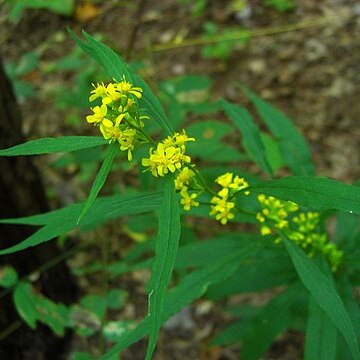Plants 3–15 dm from a short and caudex-like to occasionally more elongate rhizome, the stem striate-angled and grooved, glabrous or hairy; lvs chiefly cauline, ± serrate, acuminate, glabrous or evidently hairy, numerous, lanceolate to narrowly elliptic, mostly 10–18 × 1–4(–4.5) cm, 3–10 times as long as wide, tapering to the sessile or obscurely short-petiolate base; infl largely or wholly of axillary clusters shorter than their subtending lvs (or in robust forms many of the clusters elongate and leafy-bracteate), the terminal segment sometimes thyrsoid and nearly naked; invol (2.5–)3–5(–6) mm, glabrous or short-hairy but not glandular, its bracts 1-nerved or obscurely nerved to ± evidently 3-nerved, seldom any of them as much as 1 mm wide at or above midlength; rays (2)3–5(6); disk-fls 4–9; achenes hairy; 2n=18. Mt. woods, but not at the highest elev.; Va., W.Va., Tenn., and Ga. (S. pubens, the hairy phase)

